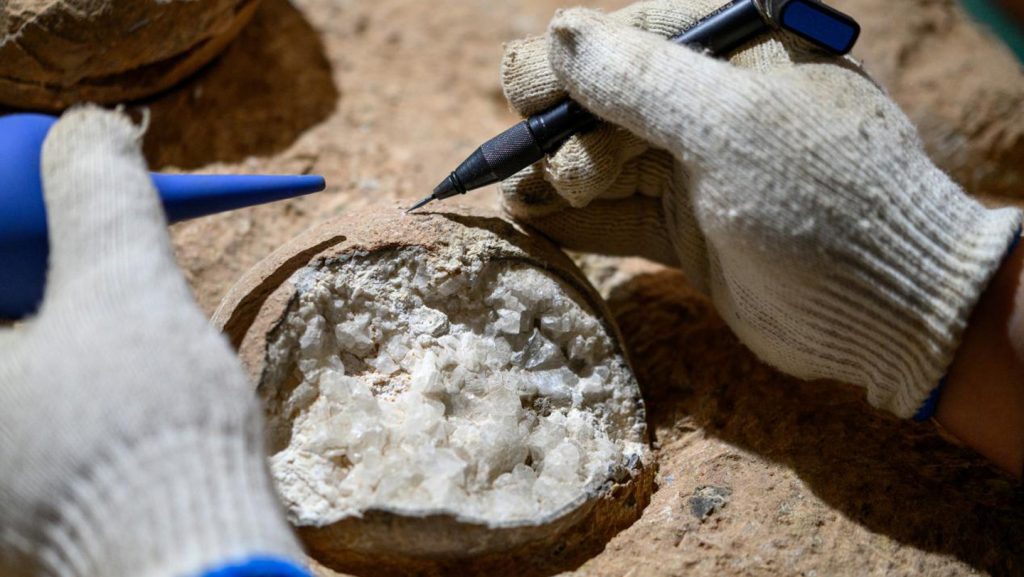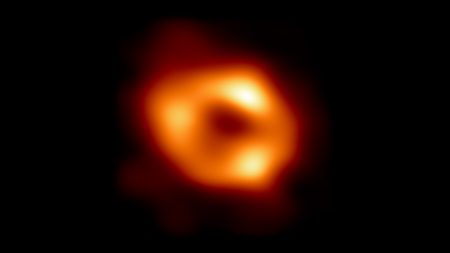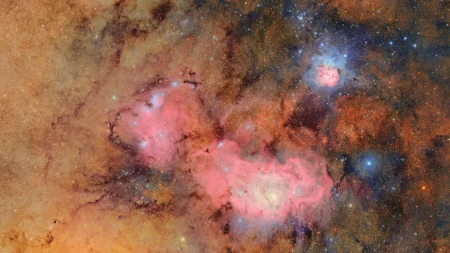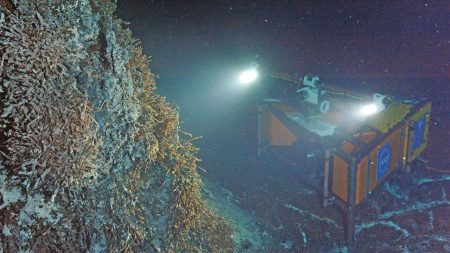Dinosaur Egg Crystals Unlock Ancient Mysteries
In a groundbreaking discovery, scientists have found a new way to determine the precise age of fossilized dinosaur eggs, solving a longstanding challenge in paleontology. At the famous Qinglongshan fossil site in central China, which houses over 3,000 dinosaur eggs, researchers have identified special crystals hidden inside a clutch of 28 eggs that have finally revealed their true age. This discovery, reported in the journal Frontiers in Earth Science on September 11, provides an unprecedented opportunity to connect climate changes with modifications in eggshell structures, offering new insights into the environments where dinosaurs nested.
Unlike traditional dating methods that rely on surrounding rocks or nearby fossils to estimate age, this new approach directly dates the eggs themselves. The fossils contain large crystals of calcium carbonate with trace amounts of uranium in their crystal structure. By analyzing the radioactive decay of uranium to lead within these crystals, geologist Qingmin Chen of the Shaanxi Institute of Geology Survey in Xi’an, China, and colleagues determined that the eggs are approximately 86 million years old. This places them firmly in the Late Cretaceous Period, a time when Earth had significantly cooled from the extremely hot temperatures of the mid-Cretaceous era.
The cooling climate appears to have influenced the physical characteristics of the dinosaur eggs. Researchers noted that the Qinglongshan eggs have remarkably porous shells, with numerous tiny holes that allowed oxygen to enter and carbon dioxide to exit during embryonic development. The number and distribution of these pores can serve as indicators of environmental conditions such as humidity, temperature, and even nesting depth. This direct connection between climate conditions and egg morphology represents a significant advancement in understanding dinosaur reproductive strategies and how these ancient creatures adapted to changing environments.
The value of this dating technique extends far beyond just knowing the age of these particular eggs. The geological basin containing the Qinglongshan site also includes rocks spanning the Cretaceous-Paleogene boundary—the critical time period approximately 65 million years ago when an asteroid impact triggered the mass extinction event that eliminated all non-avian dinosaurs. With this precise dating method, researchers can now potentially track changes in dinosaur eggs through time, possibly even examining how dinosaur reproduction might have been affected in the lead-up to their extinction.
This research breakthrough demonstrates the incredible scientific value hidden within fossils. For decades, paleontologists have studied dinosaur eggs for clues about behavior, physiology, and evolution, but precise dating has remained elusive. Now, with the ability to determine exact ages, scientists can place these reproductive artifacts in their proper chronological context, creating a more accurate timeline of dinosaur evolution and environmental adaptation. The porous nature of the 86-million-year-old Qinglongshan eggs, for instance, likely represents an adaptation to the cooler global climate of the Late Cretaceous, showing how dinosaurs adjusted their reproductive strategies to environmental changes.
The dating of the Qinglongshan eggs represents just the beginning of what could be a revolution in dinosaur paleontology. As this uranium-lead dating technique is applied to other fossil egg sites around the world, scientists will be able to construct a global picture of dinosaur reproduction through time. This will allow researchers to address questions about how different dinosaur species responded to climate fluctuations, continental drift, and other environmental changes throughout their 165-million-year reign on Earth. Most tantalizingly, it may help resolve questions about whether dinosaur reproduction was already in decline before the asteroid impact, potentially contributing to our understanding of one of Earth’s most significant extinction events.















